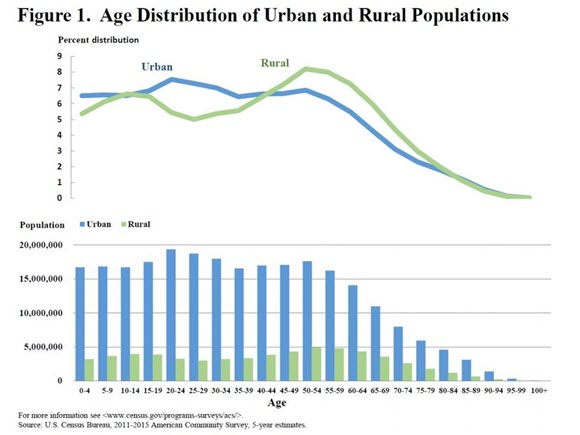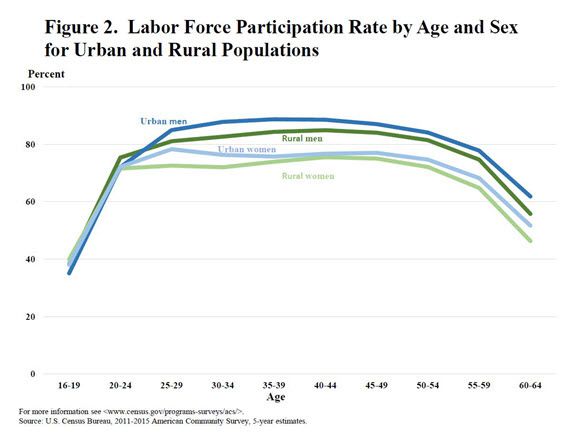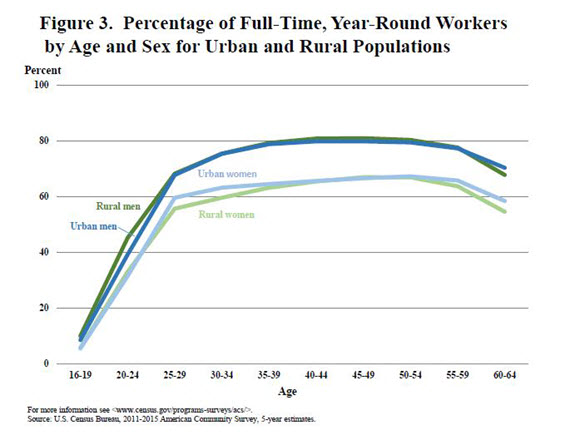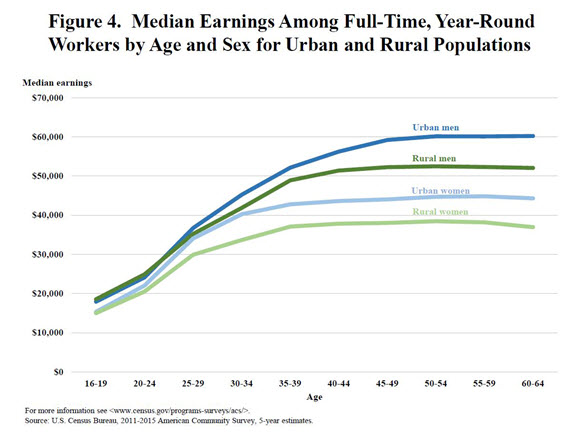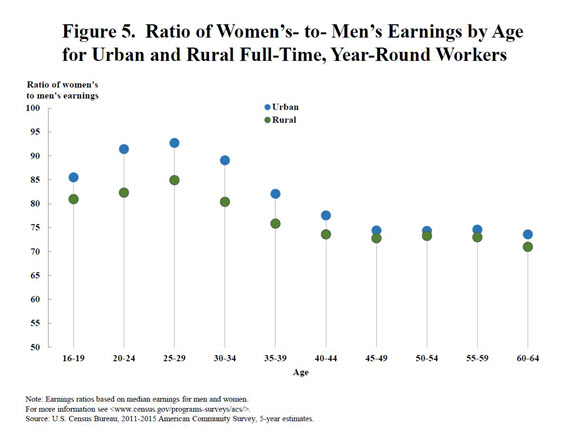
An official website of the United States government
Here’s how you know
Official websites use .gov
A .gov website belongs to an official government organization in the United States.
Secure .gov websites use HTTPS
A lock (
) or https:// means you’ve safely connected to the .gov website. Share sensitive information only on official, secure websites.
-
//
- Census.gov /
- Random Samplings /
- A Glance at the Age Structure and Labor Force Participation of Rural America
A Glance at the Age Structure and Labor Force Participation of Rural America
A Glance at the Age Structure and Labor Force Participation of Rural America
Rural America is older than urban America. The median age of all people living in rural areas is 43 years, compared with 36 years for urban areas. We know that age is an underlying factor driving many phenomena, such as labor force participation, educational attainment and earnings. With the release of the 5-year American Community Survey this year, we are exploring rural-urban relationships such as these.
When looking at the populations of both rural and urban America, we find a distribution with two peaks, baby boomers in their 50s and 60s forming one, and “millennials” in their late teens and twenties forming the second (Figure 1). While there are more people in the millennial generation in urban areas, baby boomers form the higher peak in rural areas.
Looking at the percentage distributions by age in rural and urban areas, we see notable differences particularly among people in their prime working ages (16 to 64 years). Rural areas have much older working-age populations.
Generally, an older working-age population points to lower overall labor force participation (i.e., the percentage of the overall population in the civilian labor force), as workers begin to drop out of the labor force past age 50. Rural areas have lower labor force participation overall (59.2 percent compared with 64.2 percent for urban areas). Looking at labor force participation by age groups, we find that that men and women living in rural areas have lower labor force participation than their urban counterparts at similar ages (Figure 2). The difference does not seem to stem from the availability of full-time, year-round employment. Among all workers, proportions of rural male and female workers with full-time, year-round employment are comparable with those of their urban counterparts (with some exceptions among women of childbearing age) (Figure 3).
Since earnings tend to rise with age, we might expect rural workers (as an older group) to have higher median earnings than urban workers. However, median earnings for rural male and female workers who worked full time, year-round were about $47,000 and $35,000 compared with $50,000 and $40,000 for urban male and female workers (Figure 4). Compared with their urban counterparts, rural workers have lower median earnings in nearly every age group.
Also, we see at each age group, men have higher median earnings than women at similar ages. On average, median earnings for women were 75.0 percent of median earnings for men in rural areas. In urban areas, the gap between earnings for men and women was smaller, with median earnings for women at 80.3 percent of median earnings for men (Figure 5). However, looking at the earnings ratio between women and men for each age group, we find that for younger ages, the earnings ratio is higher (closer to equal) for urban workers than rural workers. Between the ages of 45 and 64, both urban and rural women workers had median earnings about 74.0 percent of men at similar ages.
To understand earnings differences between urban and rural workers, we can consider educational attainment (Figure 6). Specifically, men and women living in rural areas had lower rates of higher attainment (bachelor’s degree or more) compared with their urban counterparts across all ages. Ostensibly, educational attainment translates into higher earnings.
This exploration is only possible by the extraordinary depth of data provided by the American Community Survey. For more information about how the Census Bureau defines urban and rural geographies, see Defining Rural at the U.S. Census Bureau.
Related Information
PUBLICATION
Defining Rural at the U.S. Census BureauShare
 Yes
Yes
 No
NoComments or suggestions?


Top

